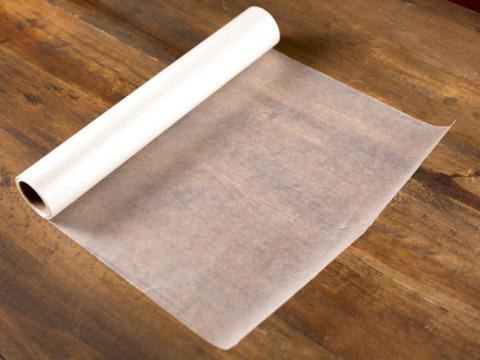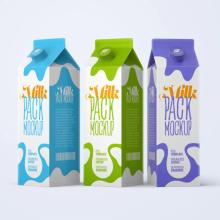
Specification
- Grammage: 27gsm
Waxed paper, also known as paraffin paper or wax coated paper, is a specially treated paper product whose distinctive feature lies in the fact that its surface is uniformly coated with a layer of waxy substance. This layer of wax is usually applied to a plain paper base by means of a process such as melt impregnation, solvent coating or slot coating of paraffin, microcrystalline wax or other synthetic waxes to form a smooth wax layer of a certain thickness. Waxed paper is manufactured to give the paper special physical properties that make it suitable for specific applications.
Features
- Moisture and water resistance: One of the main characteristics of wax paper is its excellent resistance to moisture and water. The wax layer effectively prevents moisture from penetrating into the paper, allowing the paper to remain dry in humid environments or when exposed to moisture, protecting the items it wraps or covers from the effects of moisture.
- Grease penetration: Waxed paper has a good barrier to grease and oils, preventing them from penetrating through the paper, a property that makes it particularly suitable for use in scenarios where there is contact with grease or oily foods, such as baking, cooking or food packaging.
- Smooth surface: The wax treatment gives the paper a smooth and non-stick surface, which reduces the friction between the paper and the wrapped item, making it easier to place, remove or clean the item during use, and avoiding the problem of the item sticking to the paper in some cases.
- Heat resistance: Although the degree of heat resistance of wax paper varies according to the specific product and the wax material used, in general, wax paper is able to remain stable within a certain temperature range, and is suitable for baking at low or medium temperatures as well as for short-term exposure to high temperatures, for example, for short-term use in ovens or wrapping hot food.
- Environmentally friendly and economical: Compared with disposable plastic packaging materials, wax paper, as a biodegradable paper product, is more in line with the concept of environmental protection. At the same time, its single-use feature simplifies cleaning, and it has a certain economic value especially in the catering industry and home cooking.
Applications
Wax paper has a wide range of applications in several fields due to its unique properties:
- Food processing and packaging:
- Baking: In baking, waxed paper is often used as a baking tray liner to prevent pastries or bread from sticking directly to the baking tray, which facilitates release and simplifies the cleaning of the baking tray. Although parchment paper may be more commonly used in modern kitchens, wax paper is still a cost-effective option in certain situations, especially for low-temperature baking or baking applications that are completely covered with paper.
- Food Wrapping: Used to wrap hot or cold foods such as sandwiches, fries, and deli items to keep the food warm while preventing grease from seeping out and keeping it neat and tidy. In addition, wax paper can also be used to make food storage bags to provide short-term protection against moisture.
- Industrial & Commercial:
- Parts identification: In some industrial environments, wax paper has been used to produce permanent identification labels by printing or handwriting, such as the use of electrochemical etching to produce aerospace parts identification, although modern technology may have replaced this traditional practice.
- Cargo packaging: In storage and transport, wax paper can be used to provide temporary protection by wrapping items that are susceptible to moisture or need to be protected from grease contamination.
- Household and personal care:
- Clothes care: When ironing clothes, wax paper can be used to make temporary ironing board liners to prevent clothes from coming into direct contact with the iron and possible sticking.
- Hairdressing: During hair colouring, wax paper can be used to isolate certain parts of the hair and prevent cross contamination of the colour.




